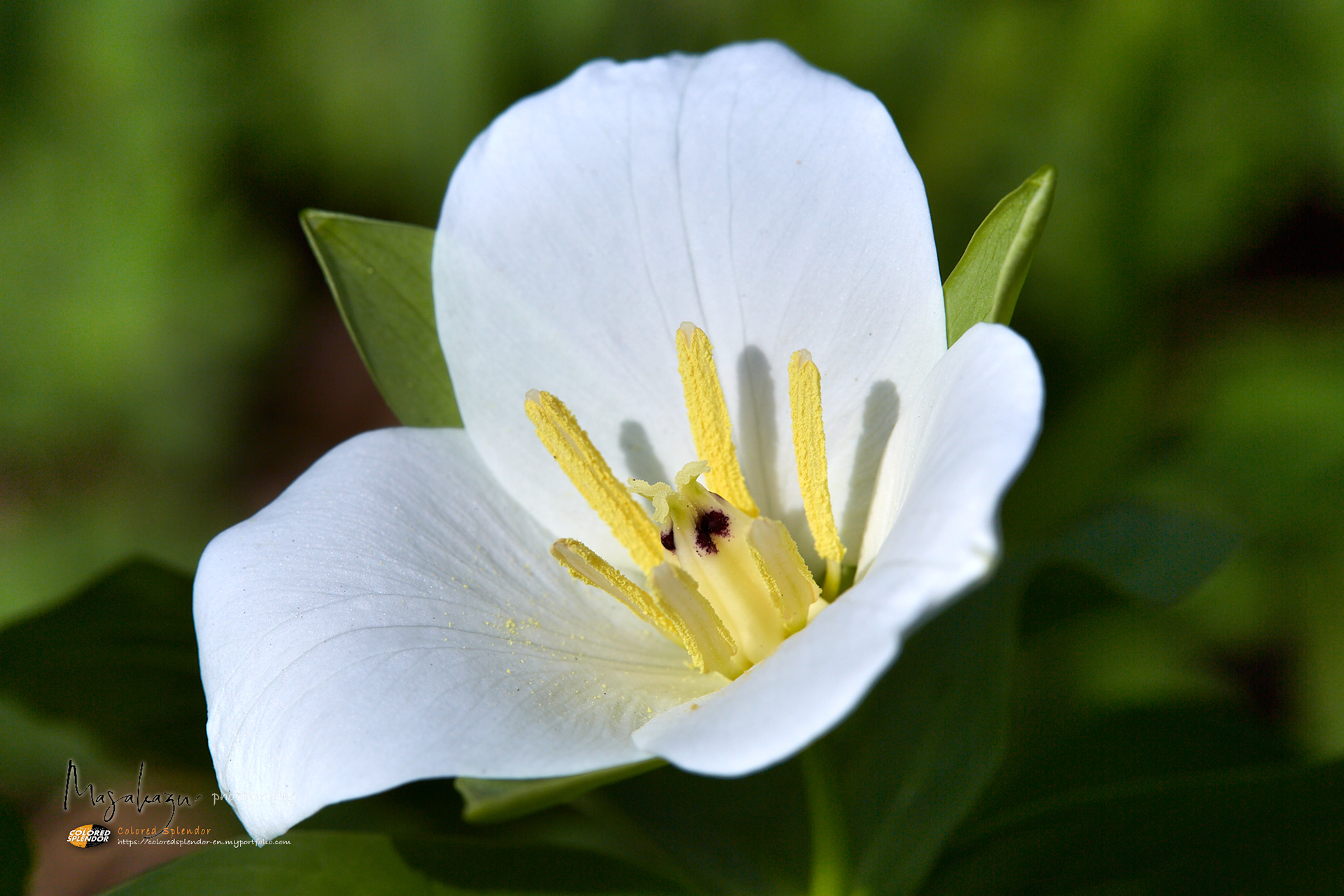Spring Ephemeral(Trillium kamtachaticum, オオバナノエンレイソウ)
- Wildflower garden (Obihiro City Wildflower Garden)/
I dedicate this work to my Ukrainian friends and to the Ukrainian people.
I dedicate this work to my Ukrainian friends and to the Ukrainian people.
With a macro lens, I chased the spring fairy, Trillium kamtachaticum, through the wildflower garden in Midorigaoka Park, Obihiro City, in early May. This work records the most spring-like moment in Tokachi, Hokkaido, about a month after the snow melts.
It has been almost one year and three months since President Vladimir Putin launched a military invasion of Ukraine under the banner of Russian nationalism and imperialist nationalism. Ukraine is risking its life to defend its territory. It is confronting Russian troops who continue their inhumane destruction and aggression with the military support of the West.
A Ukrainian friend said, "The world seems divided in two. One side wants peace, freedom, and democracy. The other is a dictatorship, trying to achieve its economic goals by force, through policies of bribery, intimidation, or direct military action against foreign territories."
We, humans, are about to witness the one man who threatens to "use nuclear weapons" choose between the two.
I love spring.
I want to see it next year, the year after, and the spring of the future.
I believe this wish is the same for the people of Ukraine and all who wish for peace, freedom, and equality.
I believe this wish is the same for the people of Ukraine and all who wish for peace, freedom, and equality.

☘️
☘️
The entire habitat is important:
This plant is distributed in Japan from Hokkaido to northern Honshu. It is found in broadleaf forests in the Tokachi region of Hokkaido. It is especially abundant in haru elm and yachidamo forests, often growing in clusters. It is a perennial herb that blooms from May to June. Still, it takes about 15 years to flower, and it will disappear if the ground is disturbed by cultivation.
This plant is distributed in Japan from Hokkaido to northern Honshu. It is found in broadleaf forests in the Tokachi region of Hokkaido. It is especially abundant in haru elm and yachidamo forests, often growing in clusters. It is a perennial herb that blooms from May to June. Still, it takes about 15 years to flower, and it will disappear if the ground is disturbed by cultivation.
It is a very clever plant:
The seeds are covered with a sweet jelly-like substance called Elaiosome, a favorite of ants. The ants return the seeds to their nests, detach the Elaiosomes inside the nest, and discard the roots outside the nest. This way, this plant can use ants to disperse its seeds over a great distance.
The seeds are covered with a sweet jelly-like substance called Elaiosome, a favorite of ants. The ants return the seeds to their nests, detach the Elaiosomes inside the nest, and discard the roots outside the nest. This way, this plant can use ants to disperse its seeds over a great distance.
The Ainu people used it for food and medicine:
The Ainu people called the berries of this plant "Kinaemauri," and the berries were edible when they ripened sweetly and turned black. They also used the dried root as a medicine for stomachache, as a decoction of the dried root was effective.
The Ainu people called the berries of this plant "Kinaemauri," and the berries were edible when they ripened sweetly and turned black. They also used the dried root as a medicine for stomachache, as a decoction of the dried root was effective.
☘️
You can buy this series photo at Adobe stock >>
